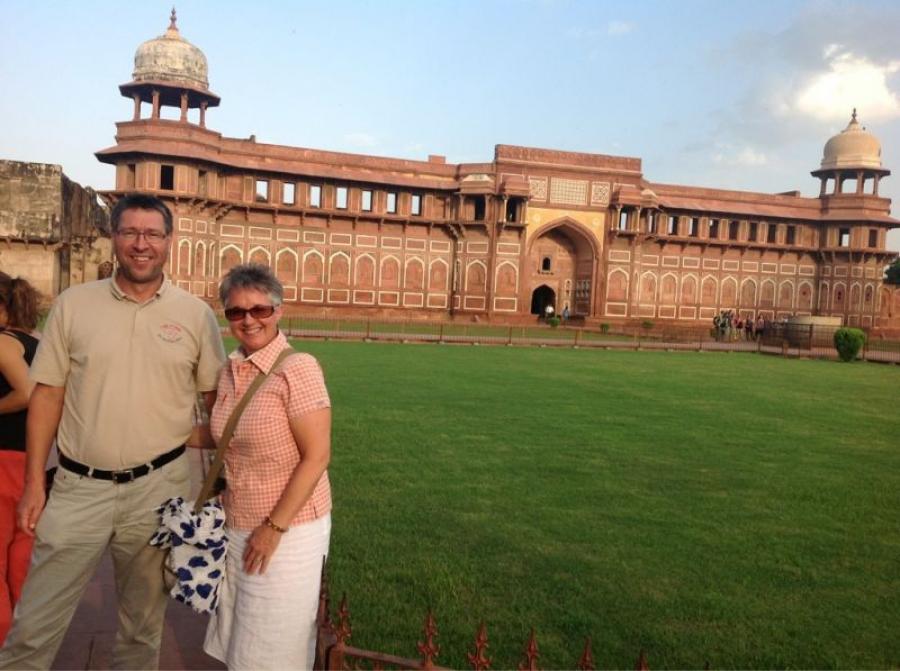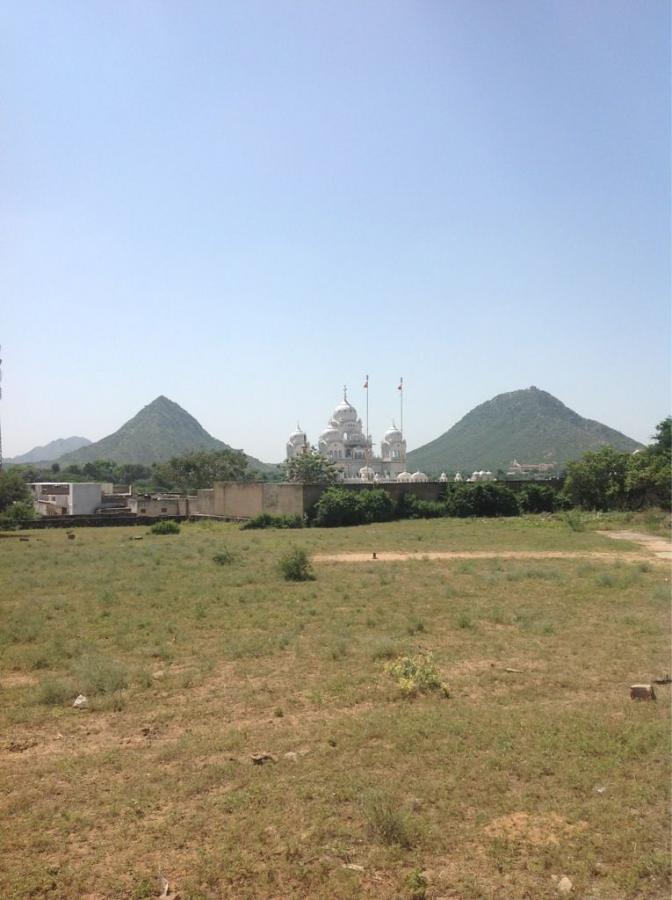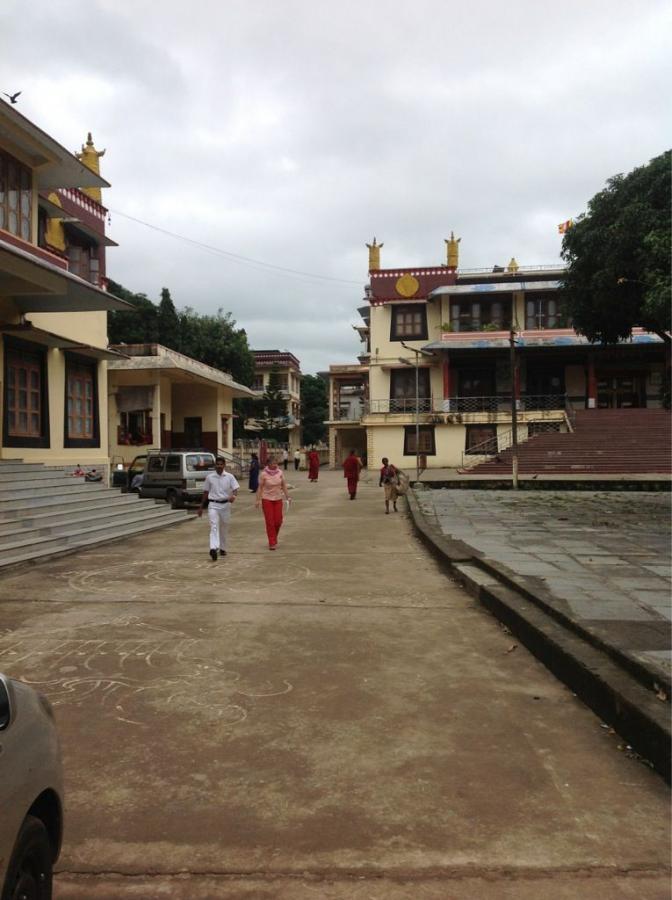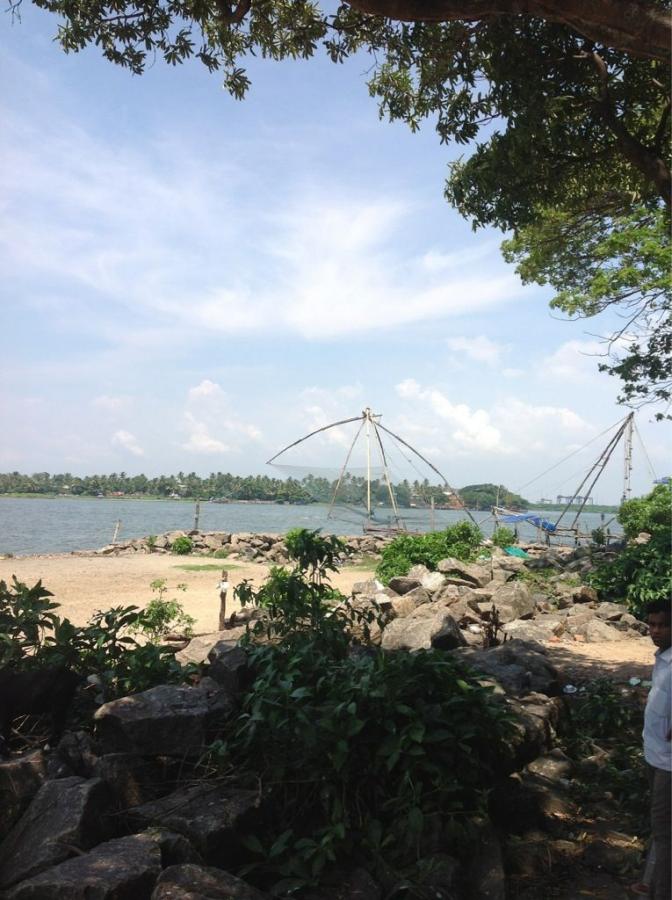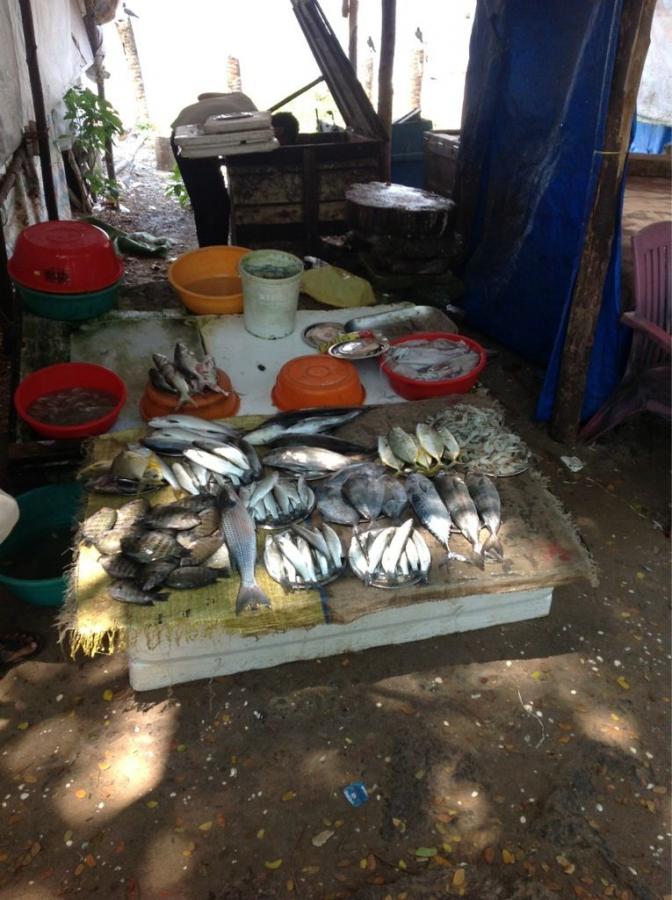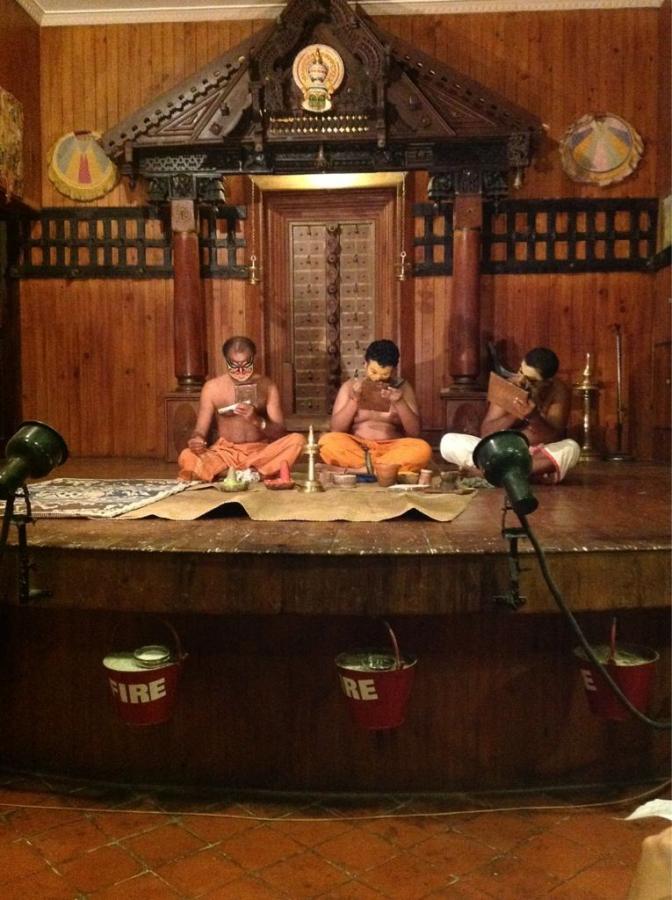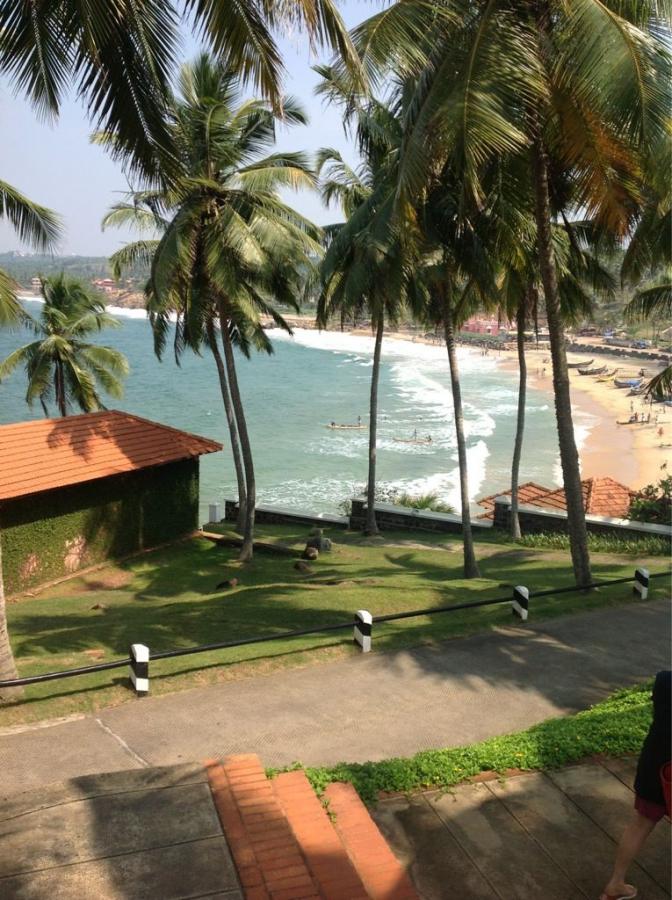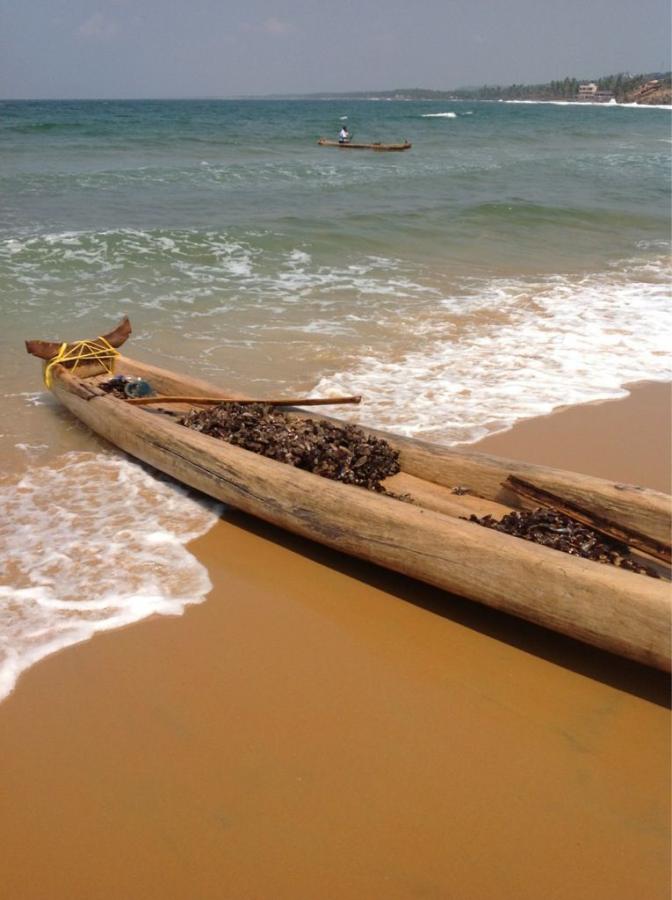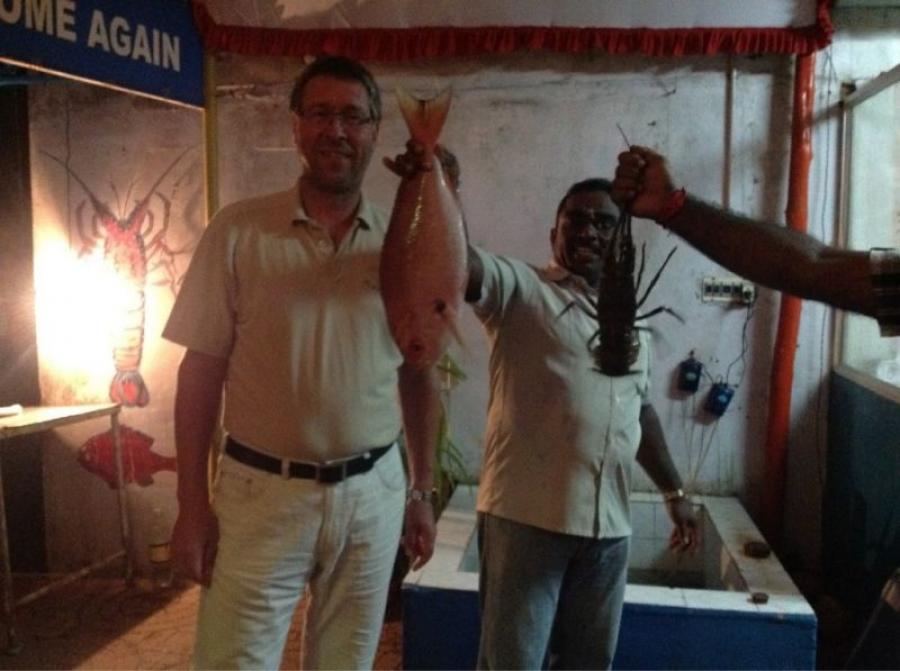India
Asia - India - Rajasthan - Goa - Karnataka - Kerala - Delhi
von 22.09.2012 bis 14.10.2012
Autor: Heimo Wallner22.09.2012
India welcomes us
Salzburg – Vienna – Dubai – Dehli
The journey via Vienna and Dubai was very pleasant. We were brought safely to Dehli by Emirates Airways. The airline scores with comfortable aircraft and good service. The price-performance ratio is right at Emirates.
In the cooled, surprisingly quiet airport building, the customs officer checks our passport with the registered visa very carefully. After receiving our luggage, we will dive into the world of India. Delhi welcomes us with 34 degrees, beautiful weather, a friendly driver who takes us to the Radisson Blue Marina Hotel at Connaught Place in New Delhi.
During the first reconnaissance walk, the Indians immediately recognize that we are “newcomers”. Our pace is not yet adapted to Asian composure. Every few meters we are approached, “Sir, do you want Shopping, do you want cold Drink ?” One man said he had an Indian helicopter. Beggars touch us and want a few rupees.
After an hour we decide to have a beer, and find a rodeo restaurant, where a friendly Indian in western dress gives us Budweiser and then Mexican beer. Food served that is spicy. Before bedtime a sip of whiskey for Heimo and a psych. important Nipper gentian schnapps from Galtür for me. That is connection between nations! Speaking of serenity:
In the Delhi Times I read an article about Times Life – Slow Down.
We live in a culture in which being overworked has become a status symbol.
Stress in the Indian subcontinent?
In the next three weeks we will be guests in this country and will report to you.
Author: Brigitte Wallner
23.09.2012
Crowd as far as the eye can see
Full of energy we start our day in Delhi and have planned three attractions.
The visit to the Akshardham temple, shows us the colorful diversity of India. On Sunday, the locals visit the holy site with their families. The beautiful, brightly colored saris of the women are a feast for the eyes. The children are also wearing their Sunday best and have adorable faces. Taking pictures in the temple is not allowed, so we take these memories in our hearts. The Hindu temple is made of white marble and contains about 20,000 carved deities.
We read 4 qualities in a deity:
Faith – Love – Compassion – Peace
When we visit the Red Fort, we are again greeted by a crowd of people, a colorful variety, lots of stores and crowds. Red Fort dates back to the heyday of the Mughals, built in the 17th century. and is one of the most important sights in Old Delhi. The Prime Minister delivers his annual speech from the Red Fort on Independence Day.
To end the day, we will take a rickshaw ride through Old Delhi. Noise, stench and a hopeless mess should keep us away for reasons of reason, but we want to immerse ourselves and experience the Indian soul.
Countless photo motifs , such as 5 people on a moped, a barber who shaves the men sitting on the street around 5 rupees. (whereby the rickshaw driver means in good English, this is not clean), the individual markets offering their wares, emaciated dogs, goats and sheep, the exposed electrical cables, of which one cannot imagine that they can still function at all, and. much more, let us just press the shutter button. Heimo’s “IPad” is considered desirable and he has to be very careful.
Today we also learn what the Indian meant yesterday with the Indian helicopter – a rickshaw.
Whether we liked Agra, you can find out tomorrow.
Author: Brigitte Wallner
24.09.2012
Uttar Pradesh home of the Taj Mahal
The driver picks us up from the hotel at 9 am and we drive 265 km to Agra in 5 1/2 hrs. The day is entertaining, we take so many impressions and always have the camera in hand. Sing, our driver explains important points to us during the ride. His English takes some getting used to, but with time we understand him better and better.
The state of Uttar Pradesh with its capital Agra is one of the 16 Indian states. India’s most famous landmark, the Taj Mahal in Agra, attracts 4.5 million visitors a year. tourists, 70% of whom come from India.
Arrived at Hotel Trident, a nice, clean hotel with friendly service, we visit Agra Fort after a short break. Our Indian agency colleague, whom we met at the ITB in Berlin, sent us a guide who spoke very good English and led us through the fort with detailed explanations.
In the 16th century. the then ruler Akbar began construction of the red sandstone fortress on the banks of the Yamura River. His grandson, Shab Jahan built a palace with white marble. The essence of the story is that the ruler indulged himself in all imaginable comforts, especially a large harem, viticulture and a lot of luxury. The palace was well guarded. in the outer ditch the water was full of crocodiles.
The view is fantastic and not far away we look at the Taj Mahal, which we will visit tomorrow.
Dinner at an Indian restaurant in Agra is an experience. The whiskey afterwards at the hotel is a must!
Tomorrow we will leave at 5:45 am for the Taj Mahal to see the sunrise.
If you want to know what this experience is like, check back .
Best regards to all readers,
Author: Brigitte Wallner
25.09.2012
Sunrise at Taj Mahal
An Indian poet described him as a “tear on the cheek of eternity,” the British writer Rudyard Kipling called him “the embodiment of all that is pure,” and his creator, the emperor Shah Jahan, saw “the sun and moon weeping by his face.”
We experience an inkling of this when we leave at 5:45 a.m. to view the palace with the first visitors. The night says goodbye, the twilight is short, the day breaks and on the horizon rises the red sun, which a short time later casts its rays. In this mood we remember the stories of 1000 and one nights, of great rulers, beautiful women, precious stones, gold and others.
Our guide contributes by positioning us in several, romantic poses in front of the palace and taking pictures. We feel like lovers in a Bollywood movie and humorously join in.
20,000 people spent 22 years building the structure. They made the exquisite marble walls decorated with thousands of semi-precious stones as inlays. Inside are the tombs in the mausoleum, which are closed to visitors. We experience a particularly beautiful view when we drive to the other side of the river.
While driving through the streets of Agra, our eyes can’t take in all the passing pictures.
Street stalls, cookshops, beggars, cows, sheep and goats, smoking, noisy tuk tuks, cyclists with big loads, school children in their uniforms, old men smoking, women in colorful saris, electric wires that seem stone-age, dirt and garbage, different smells.
A few hours relaxing by the pool at the hotel give us a breather from the noisy life. Also culinary we turn back a gear today, and eat in the hotel restaurant; grateful that we have digested yesterday’s dinner( “voi Indian”) halfway well.
Boid would have been in the “g’ringlt”
Tomorrow the journey continues to the state of Rajasthan to Jaipur.
We will be happy if you read again.
Author: Brigitte Wallner
26.09.2012
Departure to Rajasthan
Travel day from Agra to Jaipur:
The decision to rent a car with driver to get to know Agra, Rajasthan with the main sights was right. India with public transport , and own organization on the spot, requires time, perseverance and yet a somewhat higher resilience, than in other Asian Lândern. The people know no fear of contact. In no time we were surrounded and touched when we stopped to think. Apart from that, there are many rip-off artists in the tourist places who are pushy.
Before entering the state of Rajasthan with its capital Jaipur (260 km), we will visit Fatehpur Sikri not far from Agra with our guide, who will leave us afterwards.
A Sufi saint in the village of Sikri, has given the Emperor Akbar in the 16th century. predicted an heir to the throne during his visit. When this came true, Akbar built his capital here with a beautiful mosque and three palaces. He built the palaces for his favorite wives – one was Hindu, one Muslim and one Christian. It was a masterpiece, but because the area was water-scarce, Fatehpur Sikri was abandoned after the ruler’s death.
The onward journey in the cool car was a relief, as it was 34 degrees during the tour.
The landscape is relaxing and allows us to leave behind the chaos of the city of Agra.
Sing, our driver is talkative today and after asking several times we understand his English quite well by now. Rajasthan the land of kings welcomes us with the ancient city walls of Jaipur (2.65 million) inhabitants. The city has to deal with high air pollution, water shortage (desert state), noise, beggars and jetting rickshaw drivers. Regardless, it offers well-preserved , living past, bazaars and other for visitors.
More about this tomorrow after our first day of sightseeing in Jaipur.
Apart from a cold (Heimo) we are doing well and the food is always a little adventure (whisky and “Enzner” included).
27.09.2012
At the Maharaja
The Maharajas – a royal existence in oriental luxury.
During the drive to the Palace of the Winds – Hawa Mahal, we again experience the diversity of India on the roads, and our eyes look left and right, spotting one photo motif after another. India’s roads are crowded, but somehow there is room for everyone and with loud honking we manage to get ahead. Cars, tuk tuks, rickshaws, bicycles, traders with their carts, cookshops, people, elephants, cows, camels and other animals live in this, for us seemingly complete mess. On the roadside, people cook, sell, shave, repair; everyday life takes place in the smog and noise of the street. The garbage is swept into a pile. The animals pick out anything edible. What remains is the plastic waste. Every now and then this is lit.
But now to the cultural points of Jaipur:
In the 17th century. the warrior and astronomer Maharaja Jai Singh II founded the city. The following maharaja built the Palace of the Winds for his ladies-in-waiting to allow them to observe the life and activity of the city without being seen. Even today you can see through the broken small windows. The five-story structure is built on a hill and offers a wonderful view of Jaipur. In 1876, Maharaja Jai Singh II had the entire city painted pink to welcome the then Prince of Wales. The pink color is the symbol of hospitality. This is still the case today.
We were also welcomed in the city with music, as today is the day of tourism in India. Wreath of flowers around the neck and dabs of color on the forehead are the gestures for “welcome”.
When visiting the City Palace, the guide shows us the wealth and prosperity of the Maharajas. The successors live in a large part of the palace. The old town, consisting of the pink houses invites you to stroll through the numerous bazaars, where one store after another is lined up. Action is called for. We will immerse ourselves once again in Jaipur before traveling to Pushkar tomorrow and on to Jodhpur.
Conclusion: For rich men, the earlier times may have offered a life of luxury. Whether women long for these sections back, I dare to doubt.
Author: Brigitte Wallner
28.09.2012
Jaipur – Jodhpur
From Jaipur we head west. The area is becoming more and more desert-like.
We reach the holy city of Pushkar.
No chicken, no lamb, no cow, no pig anyway:
With slight displeasure Heimo examines the menu at the Jagat Palace Restaurant in Pushkar, where we take a break on the way to Jodhpur. Pushkar is an important pilgrimage town for Hindus with one of the few Brahma temples in the world. It is located on a sacred lake. Ghats lead down to the lake from the many temples. Tourists should follow the rules in Pushkar and not eat meat, eggs, drink alcohol and behave morally.
The onward journey to Jodhpur is long, and we are partly shaken up on bad roads. Arrived at 6 pm in a hotel that belongs to the Maharajah family, we are rebooked. We take it with humor, and drive another half hour to the other end of town until we finally have tonight’s accommodation.
What there is to see in Jodhpur, we report tomorrow.
Namaste!
Author: Brigitte Wallner
29.09.2012
Jodhpur to Udaipur
Sightseeing of the Blue City – Jodhpur and long drive to Udaipur:
The hotel is reminiscent of colonial times, English style, and we dine by candlelight and full moon in the well-kept garden. We enjoy the peace and quiet, and realize that we need such oases to digest the many impressions, the many people and the background noise.
The view of the blue city from the mighty Mehrangarh Fortress is magnificent. The old town is really blue. The guide explains the reasons: the color reflects, cools and keeps mosquitoes away in the desert country, where temperatures can rise to 45 degrees in the shade. We stroll through the palace and marvel at the museum, which houses a collection of status symbols of the maharajas. There are several palaces; the Palace of Pearls, the Palace of Pleasure (for whom I wonder…) and the Palace of Flowers. Maharaja Jaswant Singh II wanted to be buried with BLick at Mehrangarh after his death. He had a mausoleum built of white marble, overlooking the fort and the city.
In the old town, we stroll through the Sardar Market, centered around the clock tower, before continuing on to Udaipur. Of course, the guide took us to a big store selling the best textiles. Although we affirmed right at the beginning that we don’t want to buy anything, after half an hour we go to the car with a sack. That, too, is India.
Already in the dark we arrive after a long drive safely in Udaipur at the Trident Hotel, and drink a red wine with Thai food on our 28th wedding anniversary.
Author: Brigitte Walner
30.09.2012
Udaipur The White City
Udaipur – and why the Hindu god Ganesha has an elephant’s head.
During the visit of the City Palace and the adjacent museum we listen relaxed to the German speaking guide. The largest palace in Rajasthan impresses with its many towers, balconies and domes. From the top you have a wonderful view of the white city and the lake. Udaipur is nestled by green hills on a lake, and is a popular vacation destination, especially for Indian tourists who stay longer. The streets are clean, a large part of the population has job opportunities, and poverty is contained. There are numerous beautiful hotels along the lake. tourism is well developed, and a tour of Rajasthan can be well completed here.
The boat ride on the tranquil Lake Pichola at the end of the day is relaxing. The last rays of the sun conjure up a magical atmosphere on the white hotels and houses on the lake. We close our eyes and in our imagination we are back at “1000 and one nights”.
The Hindu god Shiva left his wife one day and went into the forest to meditate. He stayed there for 10 years. Shortly after his departure, the woman gave birth to a son, Ganesha. One day, the mother ordered her son to keep watch outside the hut and not let anyone in so that she could do her personal hygiene. Then Shiva returned from the forest and wanted to see his wife. The boy defended the entrance, they fought and Shiva cut off the boy’s head. When the woman rushed over, she saw Shiva and said to him in horror, “You cut off your own son’s head!” Shiva was beside himself, asked all the gods for help to bring his son back to life. They ordered him to go into the forest and cut off the head of the first animal he would see and put it on his son’s body. He met an elephant, and so it happened that Ganesha got an elephant’s head. Since then, the elephant is known as a symbol of good luck.
Our Rajasthan trip ends here. We have experienced sunny days, experienced many impressions, and got to know the hospitality of this country.
Tomorrow we continue with Air India via Mumbai to Goa.
Author: Brigitte Wallner
01.10.2012
Backpacker Rivival
11pm Arrival at Panjim Inn in Goa – Immerse yourself in Traveller life:
Indian Air will take us from Udaipur to Mumbai after we say goodbye to Singh. He chauffeured us safely and professionally during the 8 days of sightseeing from Delhi to Agra and through Rajasthan. We experienced funny things during the driving lessons as he tried to give us explanations with his English vocabulary. E.g. Madam, Sir: In the Temple, looking, in the Temple Shiva , good, etc. When we came back to the car after a visit, his first question was, “Madam, Sir Good?”
The flight to Goa is delayed by 1 hour, because in Mumbai the airport was closed for a short time, due to heavy rains. Arrived well, a little tired, the driver has difficulty finding the guesthouse. Finally we get our room and have a Kingfisher beer before we find our sleep in the humid, muggy night.
This travel day offers no photo motives, so we put three pictures of our beautiful Rajasthan tour on the net. Tomorrow we have a day for a walk in Panjin and relaxing day.
What we experience then, you can read here.
Best regards to the entire Touralpin team. We know what we have in you.
Author: Brigitte Wallner
02.10.2012
One day Panaji is enough
Goa – Panjim – View into the tropical nature from the terrace of the guesthouse:
Strengthened by a good breakfast, we set out for a walk through Panjim.
Goa was founded at the beginning of the 16th century. occupied by the Portuguese and remained under this influence until 1961. The Portuguese heritage can still be seen. Numerous dilapidated mansions, old churches testify to this. However, few of them are renovated. The largest church, it looks like a tacky white wedding cake from the outside, was the first port of call for Portuguese sailors. Here they gave thanks for the good crossing.
As we continue our walk to the rundown city park and along the river, we are sweating wet in no time. Although it is below 30 degrees, the humidity hits us in the face like a wet rag. After 2 hours of walking, we have had enough, and we return to the Guestehouse, with great thirst. How pleasant and relaxing is sitting on the terrace on the 1st floor with the warm wind.
We enjoy the lazy day.
There will be no travel diary for the next 2 days. We will leave early tomorrow morning for Mundgod in the interior of the country to the Tibetan Settlement to visit my godchild, Tenzin. We will have no internet connection until we are back in Goa. We will then report again on how we fared.
Author: Brigitte Wallner
03.10.2012
Tibet in India
Mundgod – Local India without tourism:
We start at 8am in Panjim, initially driving along the coast in South Goa for a good 2 hours before heading inland. Again and again heavy rains require concentration from the driver. Nature, on the other hand, gives us the color green in all its nuances. The landscape is beautiful. The palm trees, shrubs and rice fields shine from the rain. Water is the lifeline for people, and farmers have tilled their fields. Cattle and cows meet us. Sometimes they lie ruminating in the middle of the road. For the Hindu, cows are sacred. Therefore, you respect them and slow down your car or drive around them. The road is in surprisingly good condition. After 6 hours we reach Mundgod, and are already curious about the Tibetian Settlement, which is 5 km outside.
On these last kilometers we are properly shaken. Deep potholes washed out by the rain, many mopeds choosing the best way, plus monks walking, let us hope to get off soon.
The experience in the tib. Center we report to you tomorrow.
Author: Brigitte Wallner
04.10.2012
Tibet and bathing beach
Tibetan impressions in India:
The overnight stay in the lodge is very simple. Heimo is happy that he can once again take a shower with the bailer. He fixed the toilet flush. What would be the trip without strong man! Good that we have the Hùttenschlafsack with us. The dinner was vegetarian and without alcohol. How is the man supposed to stay strong (Myanmar for insiders).
The Tibet Center is the largest in India, housing 10,000 Tibetans, including 2,000 monks. Two large temples are the largest buildings, schools, 1 hospital, residential buildings and administration find place.
We registered and meet the family and Tenzin in the administrator’s office. Tenzin leads us through the school, shows us a temple. We are invited to breakfast by his mother, and meet his younger brother and grandfather. The latter proudly shows us his rice fields and cows at the end.
Satisfied by the encounter and after a heartfelt farewell, we set off again on our way back to Goa, satisfied and grateful.
Author: Brigitte Wallner
05.10.2012
On the beach of Goa
Benaulim beach in Goa:
Since we have one more day before our flight south to Kerala, we spend it on a quiet beach. Although the monsoon has not yet taken its final leave, we find two opportunities for an extensive walk on the beach. The empty beach is very nice, no hotel buildings, now and then a guesthouse and small restaurants directly on the beach. Lonely Planet recommends one of them, and we sit by candlelight with a good dinner by the sea. Perfect for relaxing.
Tomorrow we fly at 7:30 a.m. to Chennai and on to Cochin, which is located on the southwestern tip of India. There we will enrich our dinner with fish and seafood.
Author: Brigitte Wallner
06.10.2012
Across the continent of India
Arrival in the state of Kerala:
Air India brings you safely and punctually after 2 stops to the city of Kochi. In the India Times we read that the airline Kingfisher has financial problems and has been grounded. We wanted to book the inside flights with Kingfisher first. It’s a good thing we decided otherwise.
Kochi welcomes us with 32 degrees and beautiful weather. During the drive to the hotel we see that it is quieter and cleaner here. Kerala, with 32 million inhabitants, is the most beautiful and successful state in India.
We are happy that we are now culinarily provided with seafood.
In a nice, quiet ambience we sit down to dinner, and choose a fish. Grilled, with garlic, lemon, chili, it is served with rice and nan (Indian flat bread). The Indian white wine does not taste bad either. Meal!
Tomorrow we will visit Kochi and experience a Kathakali in the evening.
If you are interested, read again.
Author: Brigitte Wallner
07.10.2012
Sightseeing in Cochin
Churches, fish market and why the laundry impressed us:
Kerala was discovered by sea 500 years ago. The Arabs, later the Portuguese under Vasco da Gama, the Dutch and finally the British had great interest in this land. The reason was the spices that were grown. Walking around the city we see the evidence of these times. The houses were built by the Portuguese; later taken over by the Dutch, and the British also used them. This results in a mix of all three countries. St. Francis Church, for example, was first a Roman Catholic church. Church, then it became Protestant and in the end an Anglican. It still is today.
The large Chinese fishing nets are striking, measuring about 5 by 7 meters, and operated by 5 men. We observe the catch results while walking through the fish market. Heimo’s mouth waters. The fishermen offer tourists to choose a fish, and on the opposite side of the street is the cookshop, which then prepares it.
Kerala received the world’s first communist government in 1957, after freely elected elections. This is still the case today. The government has created a facility where the poor can find the opportunity to work. We visit an area where workers wash, dry and iron laundry. Washing is done by hand on a stone; large ropes are stretched for drying, and ironing is done with an iron containing hot coals. If you use an electric iron, you have to pay for the electricity. Customers of all kinds, even small hotels drop off laundry here.
Tomorrow we will go on a houseboat to the famous backwaters.
More of that next time.
Author: Brigitte Wallner
08.10.2012
Clonk ride in indian
Backwaters – a highlight, mosquito repellent a must:
The backwaters are a 900 km long network of waterways, canals and lakes. In the past, it was the connecting roads for the villagers.
The popular boat tours are offered in different ways. We treat ourselves to a houseboat for 2 people, with a captain, a cook and a serviceman. The boat is built in the style of a rice barge with open deck, and a bedroom with shower and toilet.
Relaxed, we chug through canals, past the villages, and observe the people on the shore as they live here. Coconut palms line the waterways. We experience sea eagles, herons and other seabirds.
For lunch we will be spoiled with typical Kerala food. The fish has a slight mossy flavor. The water, the silence, the gliding on the water, and the 32 degrees, make us feel sluggish.
A wonderful sunset delights us. When sitting in the evening, however, the mosquitoes disturb us quite violently. Even Heimo reaches for the bug spray. We spend the night under the mosquito net, quite warm around 30 degrees. The next morning, after a good breakfast we drive back at a leisurely pace, supplied with many photos and impressions.
A wonderful experience.
Author: Brigitte Wallner
09.10.2012
Kattakhali
Kovalam – Relaxing Days and of course Kathakali:
The traditional art form in Kerala surprised us positively. Thinking at first of an Indian dance performance for tourists, we soon realized that artists were at work here. Kathakali is a performance of dancers who tell a dramaturgical story in facial expressions and gestures, especially in mudras (hand positions). Mostly they deal with the great themes of humanity, love, power, wealth, good and evil, etc. They are accompanied by drummers and singers. In the past, performances were held in temple complexes and lasted from evening until dawn. The preparation is very laborious for the artists, and requires discipline. They are given long makeup, elaborate costumes and hairstyles, and mentally tune into the play with meditation. At the beginning of the piece we are given an English text, and an actor explains facial expressions and individual mudras.
The performance lasted 1.5 h, and we found it entertaining. The music is new to European ears. We brought a CD for our music teacher.
Love to Daheim.
Already relaxed from our boat trip, Robert, the driver, picks us up. The last longer drive to Kovalam to our beach hotel Leela Residence, takes 5 hours.
The 2,5 weeks roundtrip through India were full of impressions and pictures. Now we are looking forward to a few days of relaxation, sea, beach and seafood.
How is this form of vacation here, we report to you.
Author: Brigitte Wallner
10.10.2012
The shell divers of Kovalam
Whoever thought that we would now just lie lazily on the beach was mistaken. As luck would have it, we settled on a beach that is still actively used by the local population for fishing. Early in the morning the fishing boats start towards the sea and drive the schools of fish into the already laid out fishing nets. From the shore, these nets are pulled ashore and emptied with combined forces.
In the meantime, smaller boats made of palm wood have already made their way to the cliff. Each of these boats is manned by a boatman and a diver. The boatman makes sure the boat holds position and the diver searches for the coveted shells. Equipped only with a diving mask and striking tools, he makes his way down into the depths.
Here it can go down sometimes up to 15 m deep to find the coveted prey. And really, after a few hours the boats return to the beach well loaded to deliver their catch. This catch is offered for sale at the fish market on the same day and consumed in the restaurants in the evening.
Mussels in white wine sauce, what more could you want.
11.10.2012
Beach – Beach – Beach
Recipe of a sunny day on the beach:
Take a portion of awakening to adjust to the first moment of the day. After that, they handed each other some courage to look out the window. If you already see the first rays of sunshine, you have a good starting point to start the day positively.
Breakfast is served on a terrace overlooking the sea. Now you should let go for an hour. After this rest, it’s time to mix in the ingredients of beach and sea. This in turn infuse for 4 hours. Do not forget to re-grease occasionally. After the first tan becomes visible, be sure to change position or relocate. Recommended if a pool is nearby.
At sunset do not forget to infuse with white wine.
Afterwards, you can let it all sink in with a good dinner of lobster, seafood, and more.
You can repeat this recipe as many times as you like. ( max. for 4 days)
12.10.2012
Arabia Sea
The Arabian Sea – lying like in a whirlpool and the call of the muezzin:
The weather means well with us. The morning newspaper indicates rainy and gloomy weather. In fact, the sun shines with a pleasant wind until 5 pm, and in the evening it is cloudy, but without raindrops.
The sea has a pleasant surf and a temperature of 28 degrees. You lie in the waves and let the water wash over you, over and over again. The ideal sea temperature for Angelica.
Caution is advised when swimming. The Indian Ocean has strong undercurrents here. The soothing sound of the water is interrupted by the call of the adjacent mosque, which calls Muslims to prayer. We are relaxed and refreshed. It does not bother us.
The hotel has a private beach. Next to it is the public section, and we can watch the young Indians with what fun they jump in waves. They do somersaults and whoop loudly. Most of them are boys and men. Indian girls rarely bathe, and if they do, they do so in their full clothing. A married Indian woman wears the sari and does not bathe. This explains why the young Indians are curious about the Western tourists in their bikinis.
However, many Indian tourists come to Kerala from the big cities. These women wear western clothes and swim in bathing suits.
India, full of contrasts, and everything has a place.
Author: Brigitte Wallner
13.10.2012
Fish – Gourmet
Culinary highlight in the plastic chair overlooking the sea:
Directly on the beach of Kovalam there is one seafood restaurant after the other. During the evening walk to dinner they present the freshly caught products and invite you to take a seat. It is still pre-season and accordingly quiet. Heimo expertly inspects the catch and selects lobster and a large red snapper.
Grilled, with garlic, lime, chili, they serve it with rice and nan (Indian flat bread). The Indian white wine, a Cabernet Sauvignon, tastes good and is even cold.
We enjoy all this overlooking the waves, at a cost of 4,000 rupees. For those interested, that’s about 55 euros. The host serves us excellently, as he has few guests, and most Travellers cannot afford this.
Today is our last day in Kovalam.
On Sunday, 4:00 a.m. we leave for the airport to catch the flight to Delhi with Air India. We enjoy the remaining hours at the sea and prepare ourselves strengthened for the return journey.
Author: Brigitte Wallner
14.10.2012
End of the trip
Today the journey home begins and we are packed with a backpack full of experiences. Impressive what you can experience during such a trip. Satisfied and happy we board the plane at 05:30 towards Dehli. We gratefully appreciate that we were able to make such a trip. It’s not something that can be taken for granted and is commonplace, so we’re all the more pleased and grateful to have such good employees holding down the fort at home.
After these three weeks, we will return to our workplace strengthened and refreshed and look forward to seeing our sons, friends and colleagues again.
The theme of this trip is fully realized, this India is truly a juggernaut, a melting pot of cultures and contrasts. And above all, it is the people who make this country feel like a fairy tale again.
Whether it’s abject poverty or immeasurable wealth, we get the feeling that Indians take it all in stride and see the role they find themselves in as quite normal. This is very admirable for us Europeans. Here we can still learn something.
For us, it was truly a journey from Moloch to Fairyland.

















